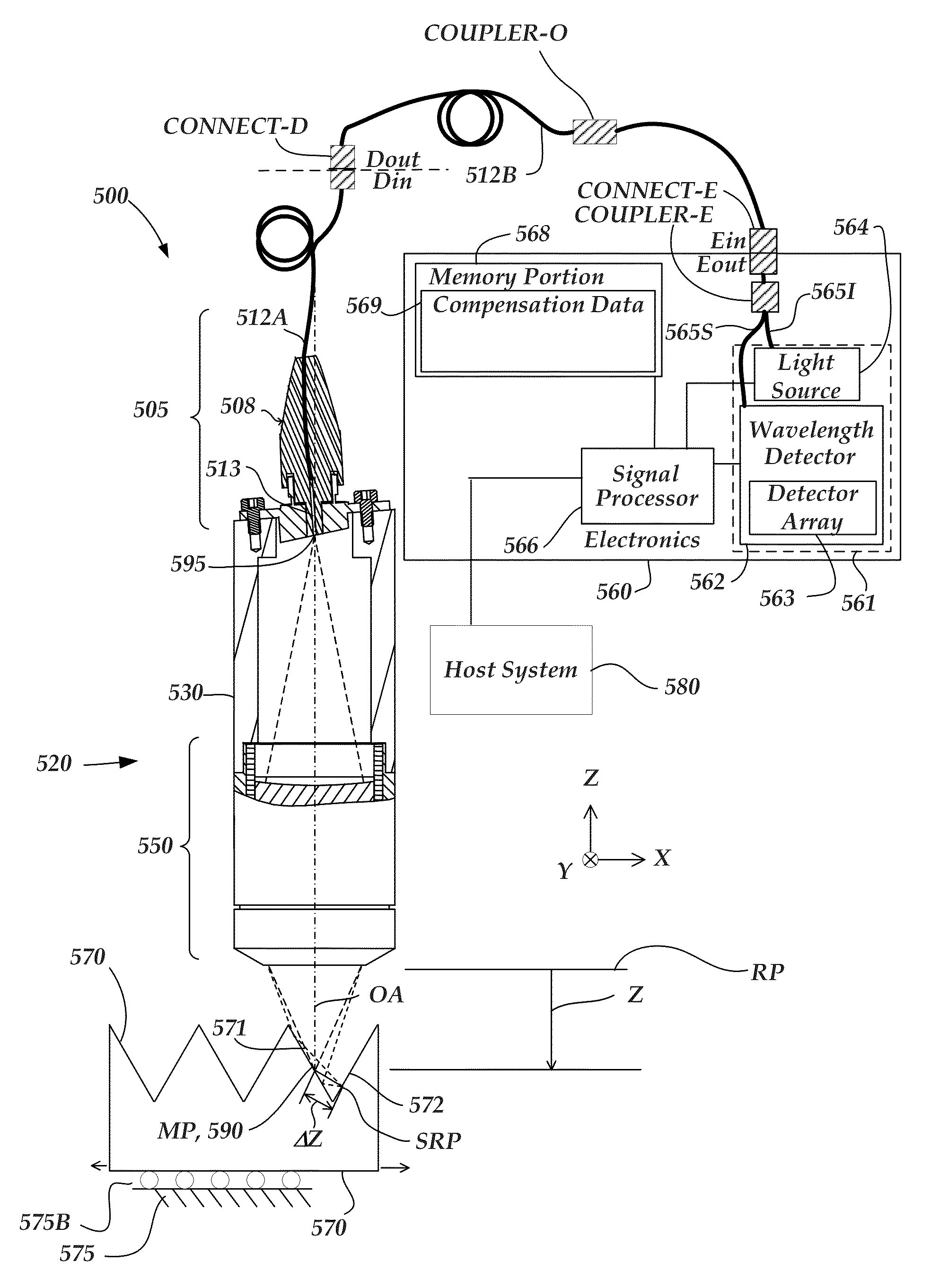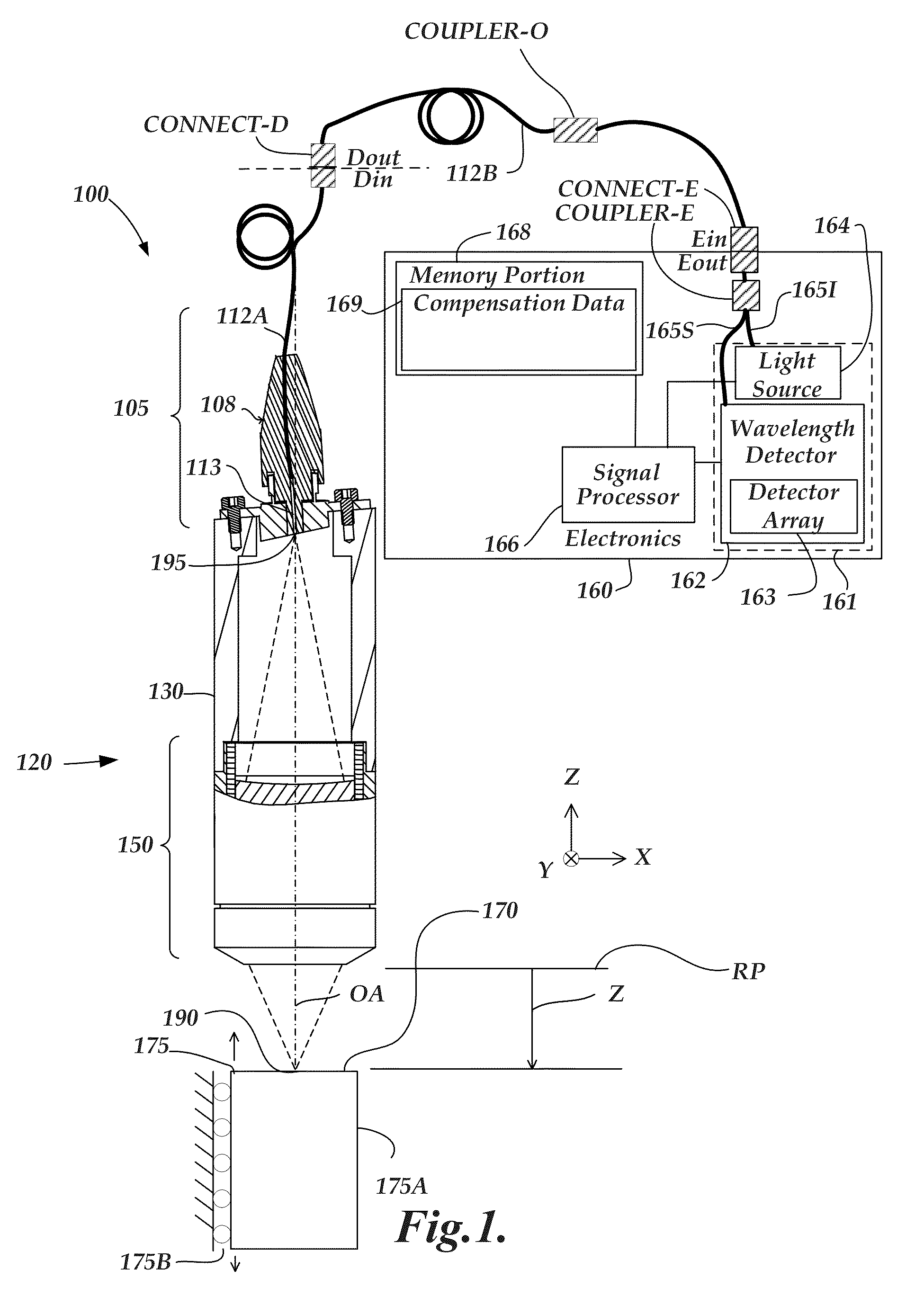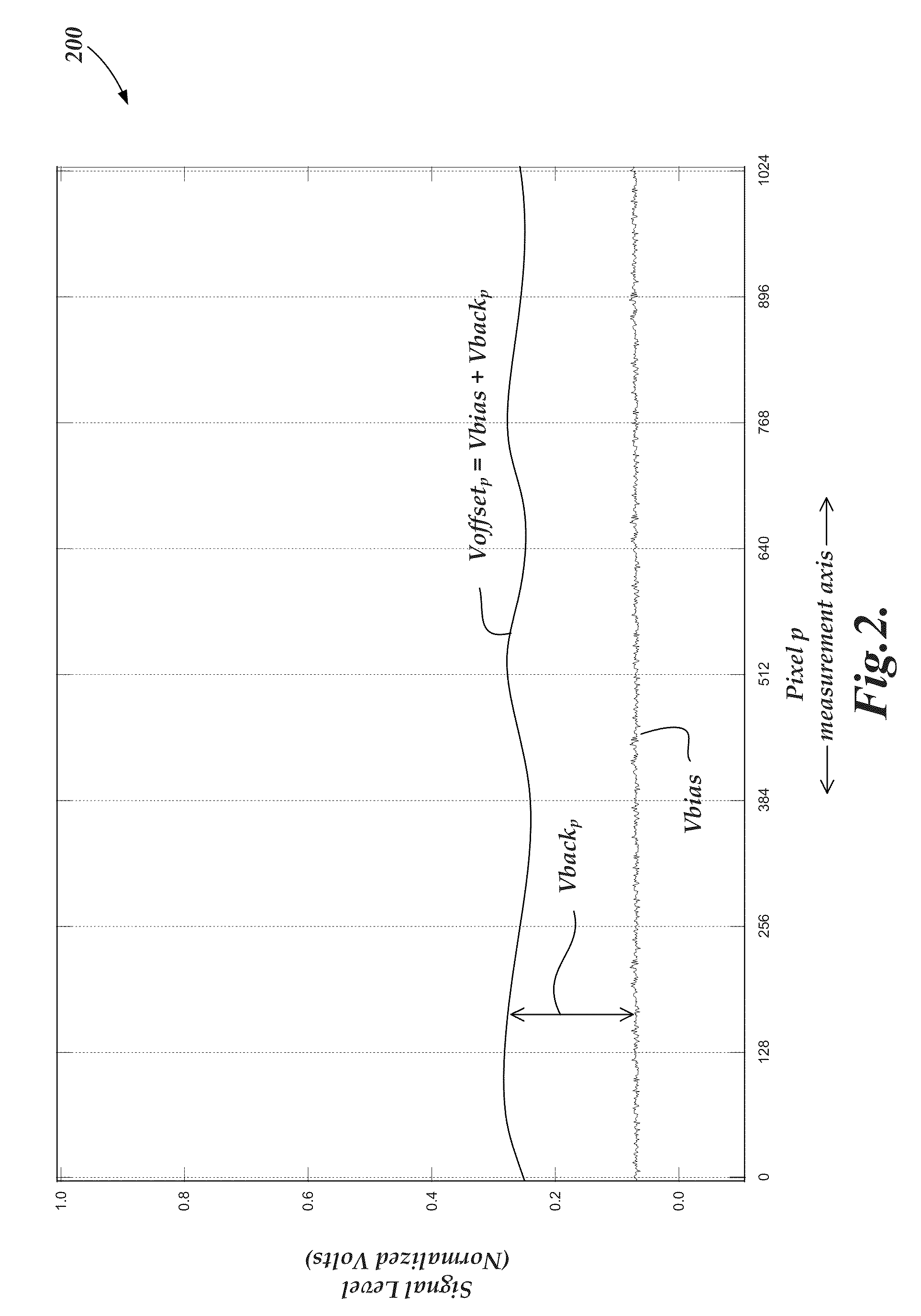Method for identifying abnormal spectral profiles measured by a chromatic confocal range sensor
a confocal range and sensor technology, applied in the field of precision measurement instruments, can solve the problems of unpredictability of two spectral peak detections, and inability to detect more than one spectral peak, etc., and achieve the effect of reliable and robustness
- Summary
- Abstract
- Description
- Claims
- Application Information
AI Technical Summary
Benefits of technology
Problems solved by technology
Method used
Image
Examples
Embodiment Construction
[0024]FIG. 1 is a block diagram of one exemplary embodiment of a chromatic range sensor (CRS) system 100. As shown in FIG. 1, the CRS system 100 includes an optical element 120 and an electronics portion 160. In the embodiment shown in FIG. 1, the electronics portion 160 includes a signal processor 166, a memory portion 168 and a source+detector subsystem 161 comprising a wavelength detector 162, and a broadband light source 164 (also referred to as a white light source, in some embodiments). It should be appreciated that the CRS system 100 shown in FIG. 1 is a chromatic point sensor system which measures a single measurement point at a time. The optical element 120 shown in FIG. 1 is an optical pen. However, in various embodiments alternative types of chromatic range systems, such as a chromatic line sensor, may be configured to operate according to the systems and methods disclosed herein. In various embodiments, the wavelength detector 162 includes a detector array 163 of a spect...
PUM
 Login to View More
Login to View More Abstract
Description
Claims
Application Information
 Login to View More
Login to View More - R&D
- Intellectual Property
- Life Sciences
- Materials
- Tech Scout
- Unparalleled Data Quality
- Higher Quality Content
- 60% Fewer Hallucinations
Browse by: Latest US Patents, China's latest patents, Technical Efficacy Thesaurus, Application Domain, Technology Topic, Popular Technical Reports.
© 2025 PatSnap. All rights reserved.Legal|Privacy policy|Modern Slavery Act Transparency Statement|Sitemap|About US| Contact US: help@patsnap.com



